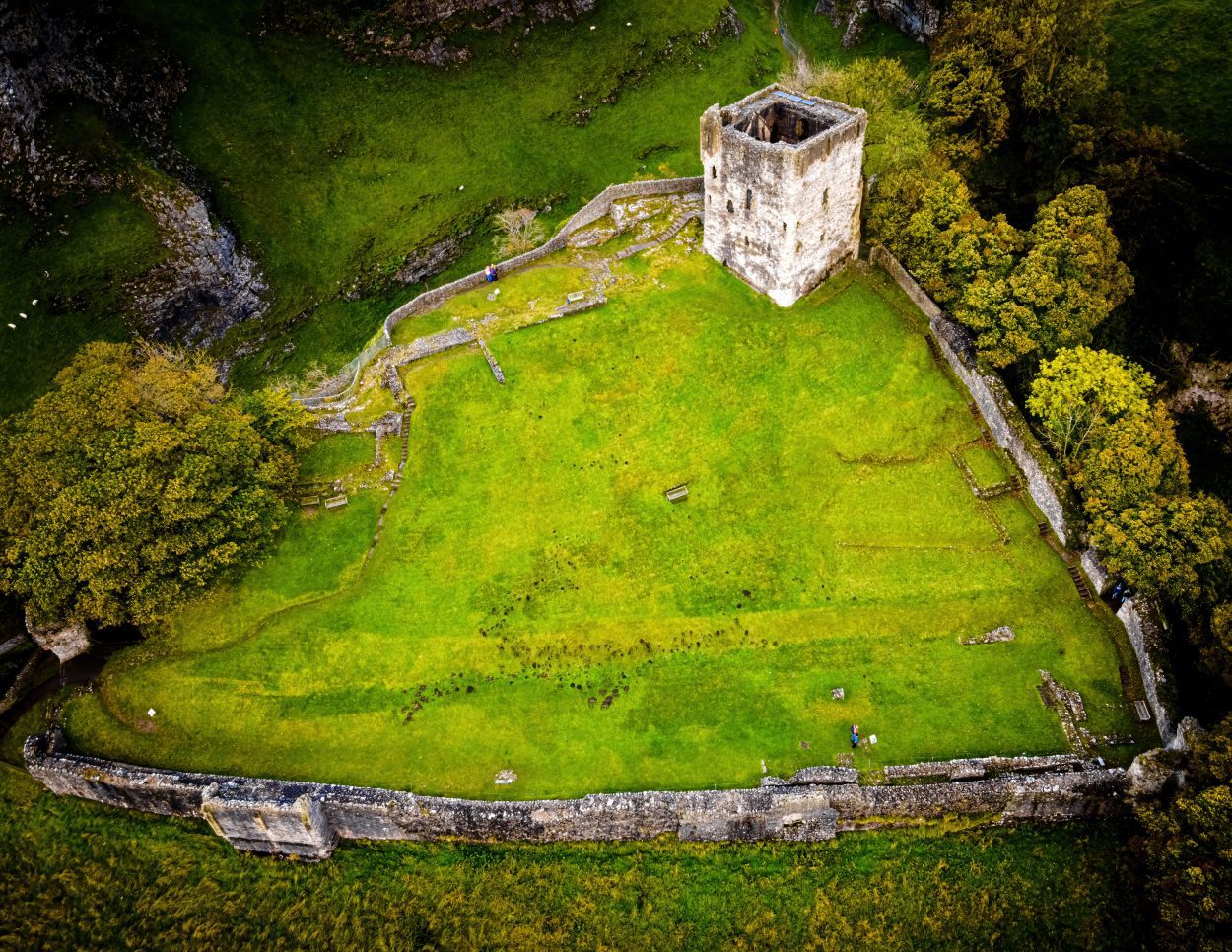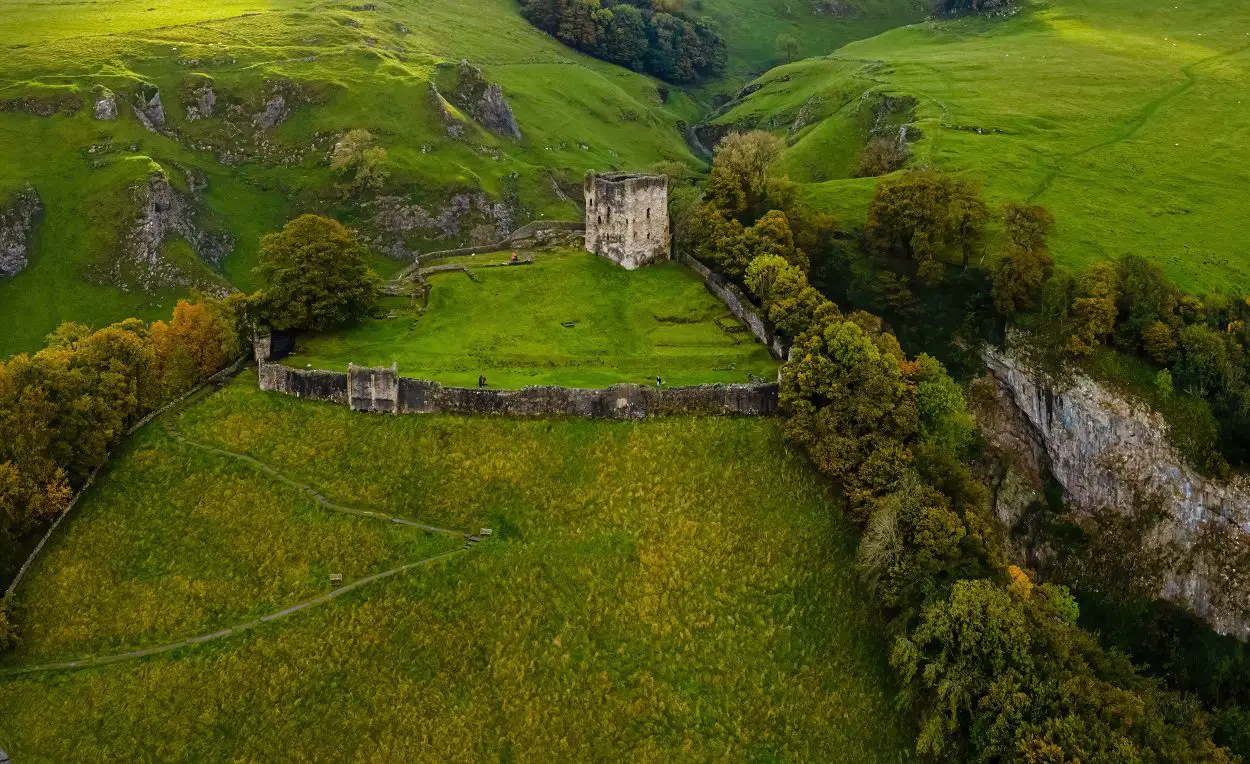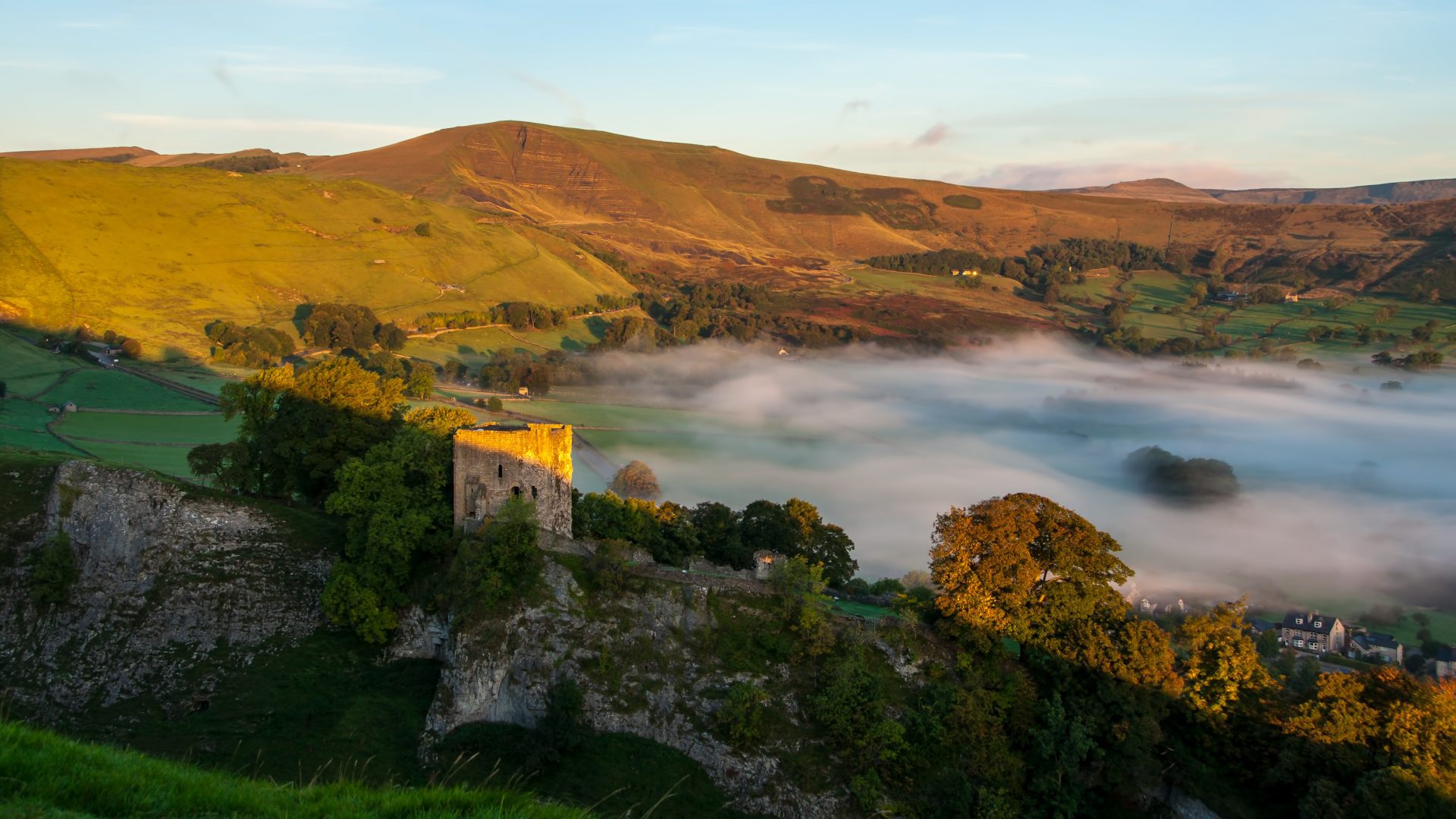Peveril Castle is a ruined 11th century fortress in the village of Castleton, situated above a giant cave opening called Peak Cavern, otherwise known as the Devil’s Arse.
Peveril Castle is first mentioned in the Domesday Survey of 1086 following the Norman conquest of England, where it served as the main settlement (or caput) of the feudal barony of William Peverel, a tenant-in-chief for William the Conqueror.
The castle was recorded as standing at Pechesers which has been translated as both “Peak’s Tail” and “Peak’s Arse”, becoming an independent lordship as the economic heart for the regions administration and the collection of taxes.
Peveril Castle was roughly triangular in shape and situated on a naturally defensible hill with insurmountable cliffs. The interior of the castle had a keep, halls, a chapel and kitchens, whilst across a gorge was a second group of supporting buildings accessed via a bridge.
William’s son forfeited the castle to King Henry II, the first Angevin king of England as punishment for having fought against Empress Matilda during her war against King Stephen during the Anarchy Period.
With Henry’s death in 1189, Richard the Lionheart was crowned and granted lordship of the Peak to his brother John. John became king in 1199 and the claim of the Earls of Derby to the Peveril estates was given to William de Ferrers, 4th Earl of Derby.
During the 14th century, the castle and estate passed to a succession of royalty and supporters of the crown for the income the castle collected, including Queen Eleanor of Castile, Queen Isabella of France, and Queen Philippa of Hainault.
After the estate was granted to John of Gaunt, Edward III’s third surviving son, Peveril’s importance as an administrative centre was in decline and the castle was stripped for lead to be used at Pontefract Castle.
The castle hosted local courts until the 1600’s for ‘both for the terror and punishment of offenders’, but by this time it was in decay and was described in a later 1609 survey as “very ruinous and serveth for no use”.
The gorge beneath the castle leads to England’s largest cave opening, thought to have been the site of human habitation since the Late Palaeolithic Period.
Historically the cave was known as the Devil’s Arse, under which it is described in William Camden’s Britannia of 1586. It is thought that the name is derived from the flatulent-sounding noises, that occur from inside the cave system when water drains away after periods of flooding.
Supposedly, the cave was where the thieves’ cant was created in the 16th century ‘to the end that their cozenings, knaveries and villainies might not so easily be perceived and known’ during a meeting between Cock Lorel, leader of the Tudor Rogues, and Giles Hather, head of the Regiment or Fellowship of Egyptians.
For over 400 years, the cave was also home to some of Britain’s last troglodytes, who lived in houses built inside the cave mouth, making a living from rope making for the local lead mines until 1915.
The name of the cave was changed from Devils Arse to Peak Cavern in order to not cause offence to Queen Victoria, during an official visit in 1880 for a concert.
Header Image Credit : Iain Ashmore – Shutterstock






